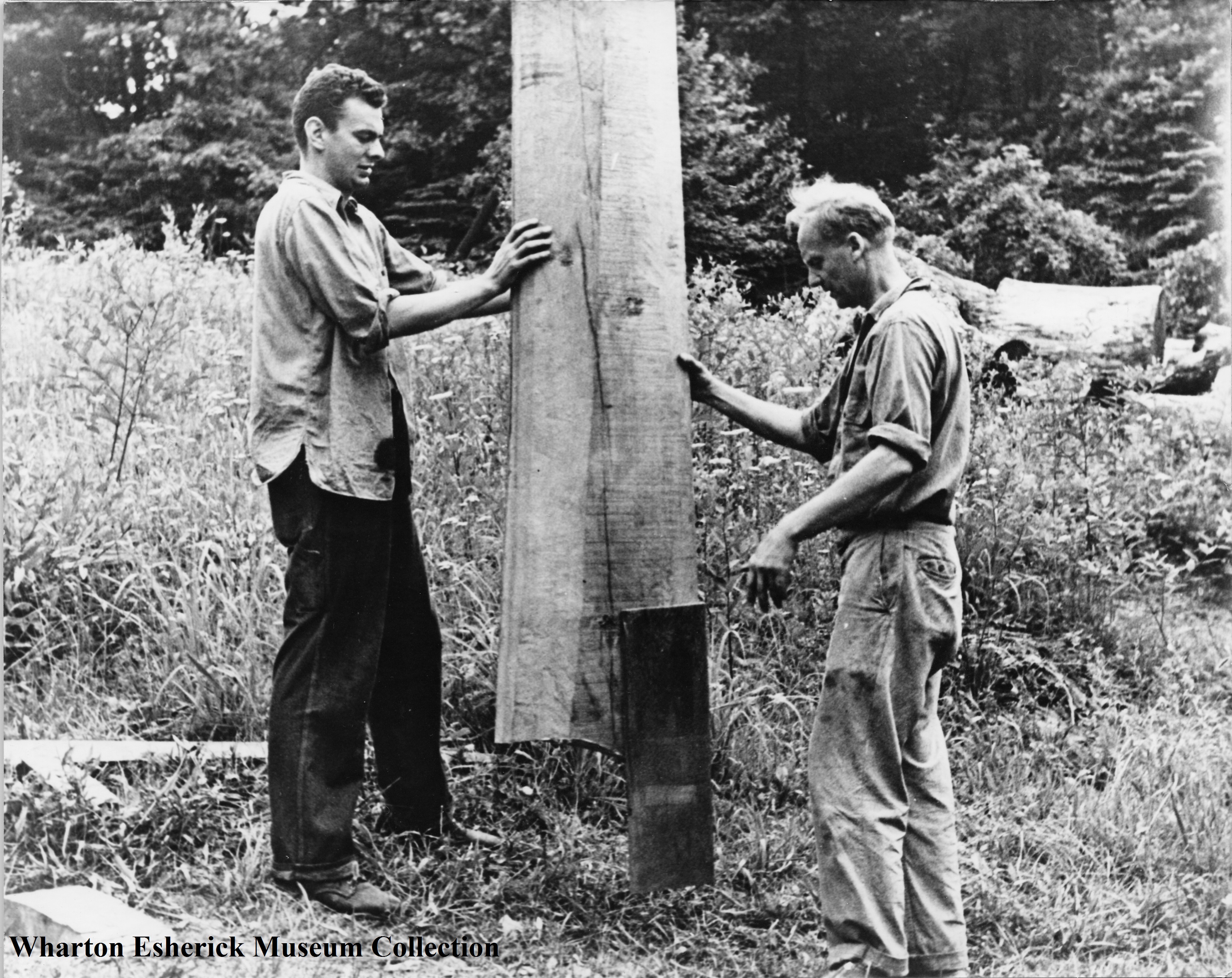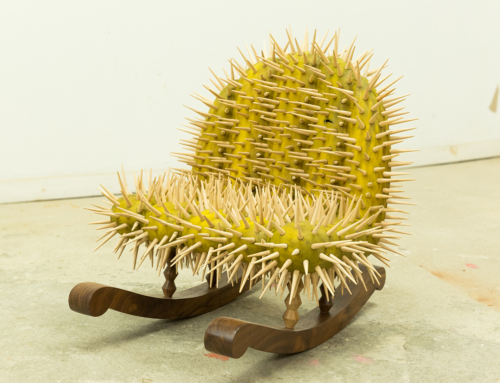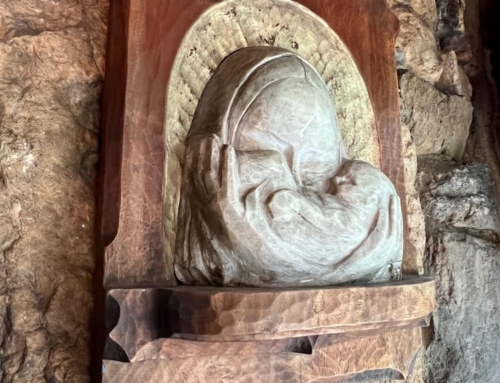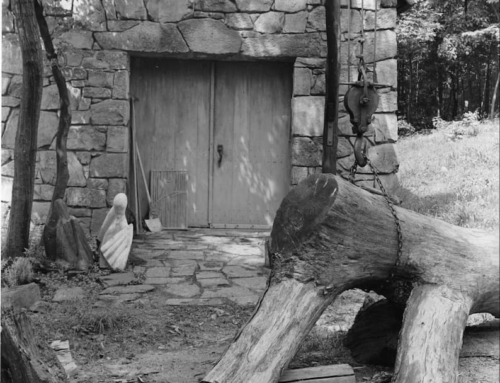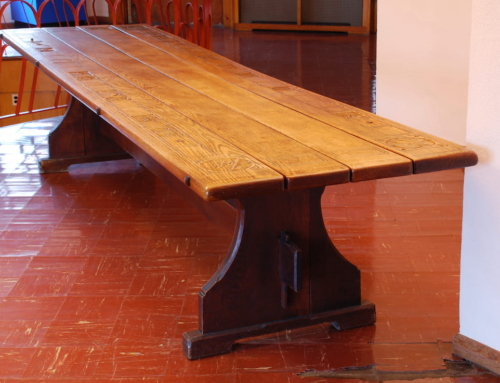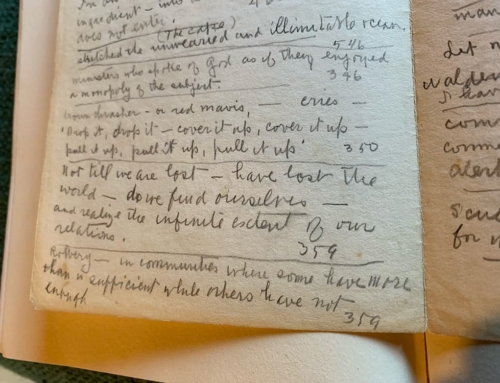Visitors to the Wharton Esherick Museum often hear about two famous architects – Louis Kahn, who worked with Esherick to design the 1956 Workshop and George Howe, Esherick’s collaborator for the New York World’s Fair exhibit. But there was another remarkable architect in Esherick’s life that is not to be forgotten – his nephew, Joseph Esherick.
Joseph Esherick’s accomplishments are numerous. He was awarded the Gold Medal from the American Institute of Architects in 1989. He was a professor at the University of California Berkley, College of Environmental Design for over 30 years, at one time serving as the Chairman of the department. Joseph Esherick was celebrated for his unassuming approach to design, valuing a sensitivity to function over architectural grandeur. As quoted in a NY Times article from 1998, the year he passed away, ”Beauty,” he said, ”is a byproduct of solving problems correctly.” These two Esherick men seemed to share common principals in their respective practices – to be direct and unpretentious in their designs. To illuminate Wharton Esherick’s influence on his nephew, we’d like to share the following excerpt of Joseph Esherick speaking at an Annual Members Party here at the Museum.
The following excerpt was originally published in the Wharton Esherick Museum Quarterly from Autumn 1990, entitled “Joseph Esherick, FAIA, Speaks at Annual Members Party:”
When I was asked by Bob if I would speak at this meeting, I accepted immediately because, first, I would have to come here to do it; and second, it would give me a chance to recall an almost endless string of things that have been enormously influential on my life and what I try to do.
It is over time and through reflection that we learn what is really useful. We, I at least, also learn from trying to explain or clarify what we’ve learned. So this is to me a pleasant opportunity – to be here and to recall Wharton and what I’ve learned from him.
I began learning from Wharton very early on. I suppose I was eight or ten when he told me to always keep my left hand behind the end of a gouge and never let it get in front. More than once, I have proved to myself the wisdom of this advice.
I recall frequent weekend visits to the farmhouse down below and almost as many visits by Wharton to our house in Mt. Airy. Wharton often brought with him models of what he was working on and would discuss at length with my father (an engineer) problems of construction. I remember with particular clarity his bringing a model of the Bok spiral stair and long discussions about how to build it without prop supports or hangers. The model was made so that the individual treads were loose and one could put it together and apply forces to it – with one’s fingers – to see how it would collapse. I especially recall Wharton’s complete openness to my questions and to my guesses as to what might work. In the end it was built Wharton’s way and it worked. One might suggest that it was his great intuitive sense that led him to the right answer. I would agree if you admit into intuition an extraordinarily open and imaginative mind, great perceptive skills plus years of experience getting it right – and probably some experience having it go wrong.
Later when I was at Penn I worked for Jim House – a sculptor friend and great admirer of Wharton – on a very large oak sculpture. He had bought a tree from a farmer down in the Great Valley, we felled it in the winter, trimmed it down to a single massive log, and then dragged it on an improvised sled over the snow to a truck. Somehow we got it on the truck and took it down to John Schmidt’s barn on Jug Hollow Road where he had an enormous band saw driven by an old Packard engine. The lower wheel and the engine were in the bottom floor of the barn, and on the upper floor were the upper wheel and a little flat truck on tracks on which one put the rough logs to feed into the saw. Somehow we wrestled the log onto the truck and rigged up a chain hoist from the ridge beam to position the log. Then we hauled and hauled on the hoist, but the log didn’t move. Finally someone looked up and found all we had been doing was to pull the barn down onto the log. Just before the whole barn collapsed, the log moved and the day was saved. John Schmidt never even blinked.
The summer after I graduated from Penn I worked for Wharton on the Bok house. There I got to know Ed Ray and Bert Kulp and John Schmidt better. It was a wonderful group – Wharton clearly the leader, but still very much a part of the group – working on everything. It was a real lesson in team work, in the pleasures and virtues of shared work as opposed to the problems of the divisions of labor. I’ve tried to work Wharton’s way ever since.
Eventually I ended up in San Francisco after the war. Wharton visited once, but couldn’t be persuaded to stay very long – he had to get back to the work which was his life. Later I visited here occasionally – once staying here over a weekend and he asked if I’d like to see anyone and I suggested Lou Kahn and Jean Francksen. They came to dinner Saturday night for steaks that Wharton cooked and whiskey that I suppose I poured. It was a typical evening with Lou – much talk until quite late, probably three.
The next morning I wandered into the kitchen where Wharton was cooking breakfast. We probably grunted or groaned some greeting and set to breakfast in dull silence. Finally Wharton broke it and said, “You know Lou would be a helluva good architect if he didn’t talk so damn much.”
Wharton and Lou were great friends and sometimes they agreed on things. I always thought Lou got his good aphorisms from Wharton, like “How would a farmer do it?” I’m inclined to doubt that Lou ever had the foggiest notion of how a farmer would do anything, but the question sounded good.
I don’t think Wharton was the source of other questions Lou liked to ask, like “What does a brick want to be?” Still, Wharton and Lou were great friends. It may tell us something that Wharton had only two architect friends, Lou, and George Howe, but he couldn’t have had better ones – either as friends or as architects.
Originally I thought I would talk about what architects can learn from Wharton, but that began to get too particular so I decided to try to talk about what we can all learn from his life and work. The way in which his life and work came together, were integrated, forms a model of a life increasingly difficult to lead. But because it is difficult is no reason not to try or to assume it can’t be done anymore.
What was so important about what Wharton did? Certainly he made beautiful things that we have come to love, and certainly he made an enormous variety of things that are beautiful or useful and if useful also beautiful – paintings, prints, sculpture, buildings, gardens, bowls, implements, furniture, tools – indeed anything he touched. But these are the products. In his work he spoke as an individual, but not in a private language, with the result that he and his work speak to everyone – not to some narrow elite, self-appointed or otherwise – but to all of us.
He had a powerful commitment to his work and a personal, but not private agenda. He had no axe to grind for any movement other than honesty – he was the antithesis of the media slave.
One of my strongest recollections is of Wharton’s railing against appearances – and I think he meant by this formalism, especially doctrinaire formalisms. His work is always about the issue at hand, whether the grain of the wood or the comfort of the chair or the curve that best expressed an emotion he felt. The fluidity and movement of his work is the product of intention and not style – and thus, stripped of the identifying trappings of style, it approaches a reality without the limits of time. It is from his devotion to a higher reality within and beyond himself that we can learn.
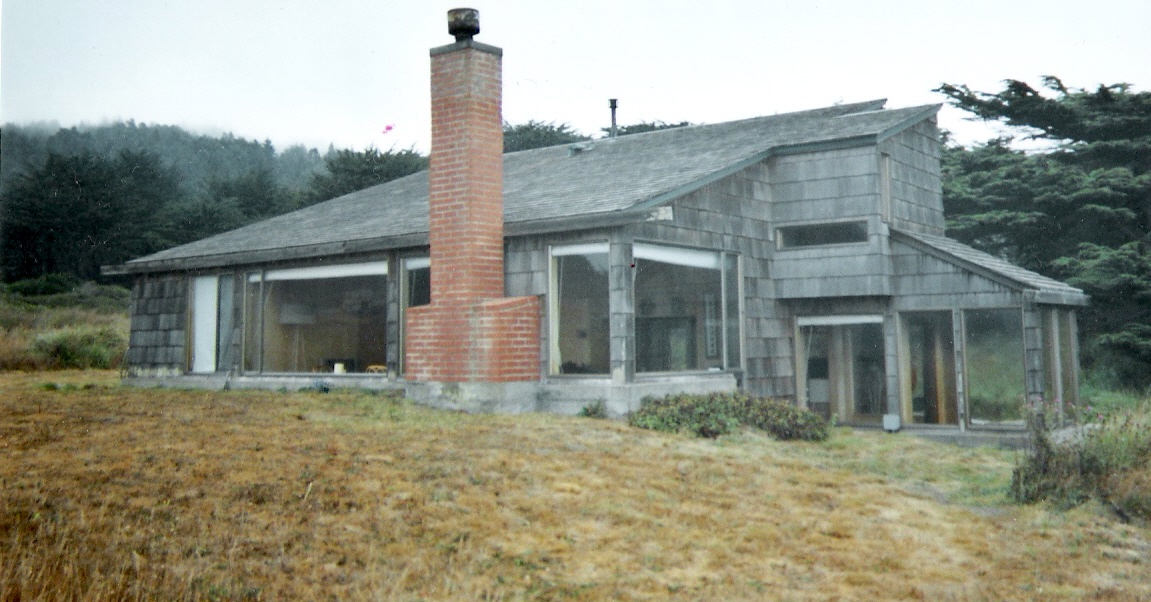
Sea Ranch House designed by Joseph Esherick, 1966. Image courtesy of Wikimedia Commons, in the public domain.
More information about Joseph Esherick can be found here:
http://www.berkeley.edu/news/berkeleyan/2008/11/05_esherick.shtml
http://www.nytimes.com/1998/12/25/arts/joseph-esherick-83-an-acclaimed-architect.html
Post written by Visitor Experience and Program Specialist, Katie Wynne.

